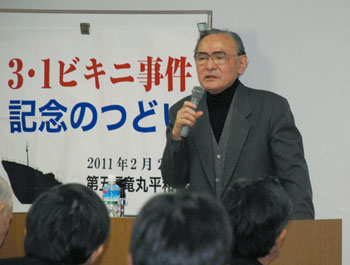Hiroshima was nothing. Nine years later on March 1, 1954, there occurred at Bikini atoll in the Marshall Islands an atomic blast equivalent to 1,000 Hiroshimas.
Matashichi Oishi, on a fishing boat 150 or so km away, saw, to his astonishment, "flaming sunset colors." A fellow crewman, equally bewildered, burst out, "The sun rose in the West." The ensuing silence must have been eerie, for the roar of the blast sounded only much later. Then came the "death ash." But they only called it that in retrospect. At the time it was merely ash, oddly like snow. "We had no sense that it was dangerous. It wasn't hot, it had no odor. I took a lick; it was gritty but had no taste."
The U.S. hydrogen bomb tests in the Marshalls are the forgotten atrocities of the atomic age. There were 67 of them altogether, spanning the years 1952 to 1958. Total up all the megatonnage and you get the equivalent of one Hiroshima every day for 19 years. They left several of the islands uninhabitable for generations to come, and cancer rates elsewhere in the archipelago remain high. Residents nearest the test sites were persuaded to leave. U.S. officials told them their land "was needed for a project that would benefit mankind." In that case, said a local leader, "my people will be pleased to go elsewhere."



















With your current subscription plan you can comment on stories. However, before writing your first comment, please create a display name in the Profile section of your subscriber account page.